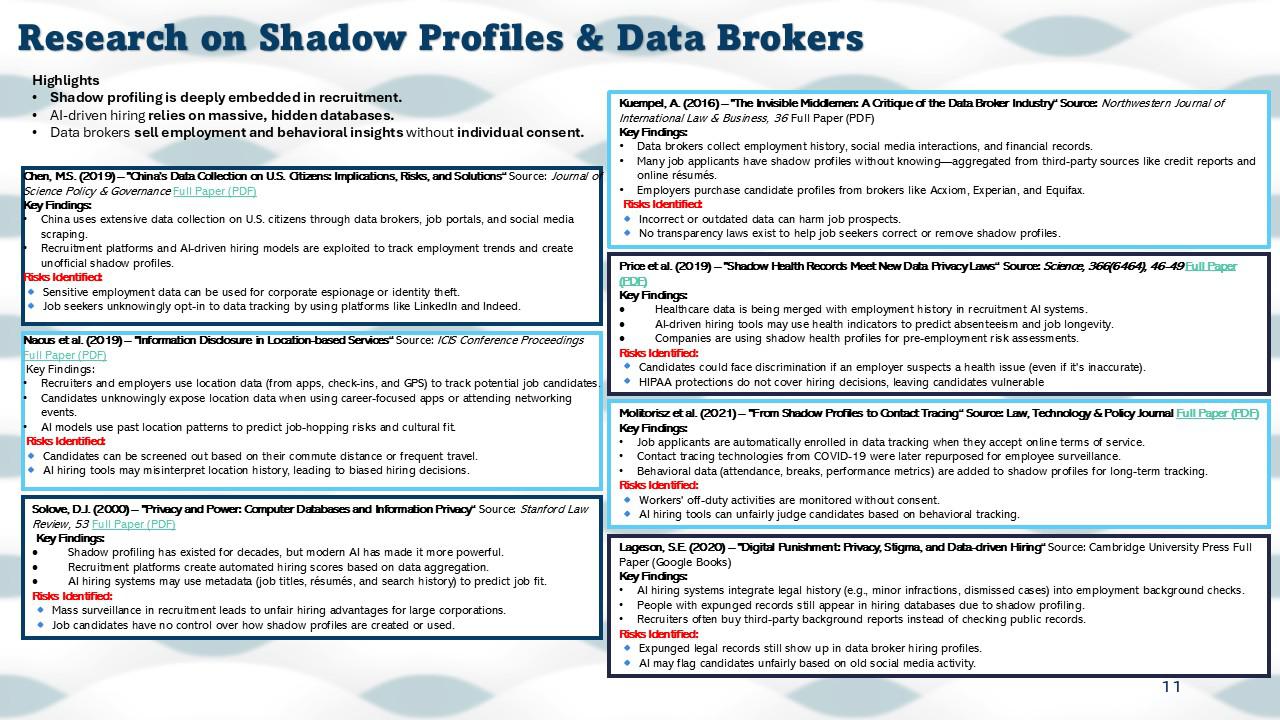
Shadow profiles are a concept used by Workday to create detailed profiles for job applicants based on assessment data and scores. These profiles are shared with third-party sources and used to train models, potentially affecting future applications.
Here are some key points about shadow profiles:
1. Assessment Data: Workday collects various assessment data from job applicants, including scores and other metrics. This data is used to create a comprehensive profile of the applicant. 2. Data Sharing: These shadow profiles are shared with third-party sources, which can include other Human Capital Management (HCM) systems and Enterprise Resource Planning (ERP) providers. This sharing helps integrate the data across multiple platforms. 3. Model Training: The data from shadow profiles is used to train models that can predict future hiring decisions and applicant suitability. This means that the information in these profiles can influence the outcome of future job applications. 4. Historical Analysis: Workday uses historical analysis to evaluate current employee performance, salary data, training, certifications, and "manager sentiment". This data is fed back into their systems to render consistent responses for future applications.
Overall, shadow profiles are a way for Workday to maintain a detailed and consistent record of job applicants, which can be used to streamline hiring processes and improve the accuracy of hiring decisions. However, it also raises concerns about data privacy and the ability of job seekers to manage their own employment data.
By acting as a data-sharing hub rather than a standalone entity, Workday effectively becomes the "one source of truth" for hiring and workforce data, giving it unparalleled influence over the job market.
This creates an illusion of competition, while in reality, Workday controls the majority of workforce analytics, hiring decisions, and employee records across multiple platforms.
This strategy helps Workday avoid being classified as a monopoly, as it appears to be collaborating with other major players in the industry.
However, it also means that job seekers may find their data shared across multiple hiring platforms without their consent, making it difficult to correct errors or control their employment reputation.